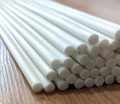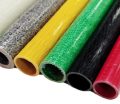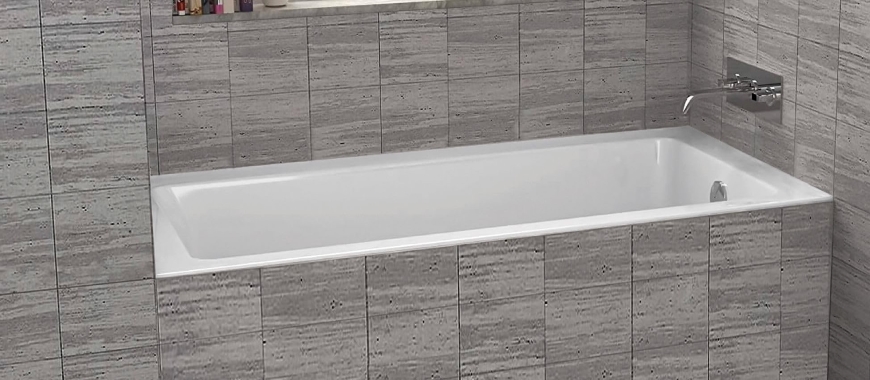
Fiberglass tub front panels are gaining popularity in bathroom renovations because they offer a perfect balance of durability and style. These panels are designed to enhance the look of any bathroom while being functional and long-lasting. Homeowners are often drawn to fiberglass tub front panels because they are easy to install, making them an ideal choice for both DIY projects and professional installations. Unlike other materials, fiberglass is lightweight, yet tough enough to withstand everyday wear and tear. The material requires minimal maintenance, making it a practical and affordable solution for those seeking a durable, aesthetically pleasing option for their bathroom. Fiberglass tub front panels are durable, waterproof, cost-effective, stronger yet lighter than acrylic, and easy to install for any bathroom.
What is a Fiberglass Tub Front Panel?
Fiberglass Tub Front Panel Material
A fiberglass tub front panel is made from a composite material combining glass fibers and resin, resulting in a durable yet lightweight product.
- This material offers excellent strength without being overly heavy, making it easy to handle and install. The resins in fiberglass provide a smooth, non-porous surface, which makes it resistant to water absorption, moisture damage, and staining. This quality is especially important in bathroom environments, where constant exposure to water can lead to long-term damage in less durable materials.
- Fiberglass is also known for its flexibility, which allows the fiberglass tub front panel to be molded into different shapes and sizes to suit various bathroom designs. Similar to a flexible fiberglass tube, this adaptability gives homeowners the option to customize their bathtub panels to fit any space or design aesthetic. Additionally, fiberglass is resistant to the typical wear and tear that comes with daily use, such as chipping, cracking, or warping, which makes it a long-lasting solution for modern bathrooms.
- Another key advantage of fiberglass is its thermal insulation properties. Fiberglass panels help retain the heat in the bathtub longer than other materials, which is a desirable feature for many homeowners seeking comfort and energy efficiency in their bathroom setups. This insulating quality is also evident in fiberglass panels for pergola designs, where maintaining a comfortable outdoor environment is just as important as durability and style.
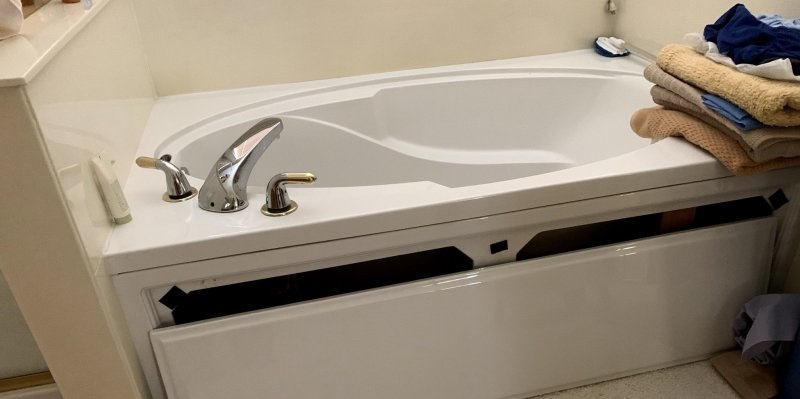
Comparison with Other Materials
When evaluating the fiberglass tub front panel against other common materials used for tub surrounds, such as acrylic, steel, or porcelain, it’s clear that fiberglass offers unique advantages. Below is a comparison chart highlighting the differences:
| Material | Durability | Weight | Cost-Effectiveness | Maintenance | Installation Complexity |
|---|---|---|---|---|---|
| Fiberglass | High (resistant to cracking) | Lightweight | Affordable | Low (easy to clean) | Easy |
| Acrylic | Moderate | Lightweight | Mid-range | Low (easy to clean) | Easy |
| Steel | Very High | Heavy | Expensive | Medium (prone to rust) | Difficult |
| Porcelain | Very High | Heavy | Expensive | Medium (chips easily) | Difficult |
A fiberglass tub front panel offers an ideal combination of durability, ease of installation, and cost-effectiveness. Similar to grp cladding sheets, it is stronger than acrylic, lighter than steel, and more affordable than porcelain, making it a versatile option for homeowners looking to upgrade their bathrooms. With its resistance to moisture, minimal maintenance needs, and flexible design options, fiberglass is a top choice for modern bathtub front panels.
Benefits of Using a Fiberglass Tele Carp Fishing Rod Today
Advantages of Using Fiberglass Tub Front Panels
Durability
One of the strongest selling points of a fiberglass tub front panel is its remarkable durability. Fiberglass is designed to resist cracks, dents, and chips, which makes it particularly well-suited for areas exposed to heavy use and moisture, such as bathrooms. This material holds up against daily wear and tear, preventing the kind of damage that might occur in more fragile materials like porcelain. Additionally, fiberglass doesn’t warp or deform with time, even in humid conditions, giving homeowners peace of mind that their tub panel will remain intact for years. In contrast, materials like acrylic or steel may experience rust, warping, or other issues over time, but fiberglass maintains its structural integrity.
Lightweight
A major advantage of a fiberglass tub front panel is its lightweight nature. Fiberglass is significantly lighter than materials like steel, porcelain, or cast iron, which can be difficult to handle and install. The lightweight characteristic of fiberglass allows for easy transportation, handling, and positioning, making the installation process much simpler for both DIY enthusiasts and professionals. For homeowners, this means less effort, reduced labor costs, and a faster installation compared to heavier alternatives. Moreover, its light weight reduces the risk of damaging the panel or surrounding areas during the installation process.
Cost-Effective
Fiberglass is one of the most cost-effective materials available for tub panels. A fiberglass tub front panel is generally less expensive upfront than more premium materials like steel or porcelain. Beyond the initial savings, fiberglass provides long-term economic benefits due to its low maintenance needs. Its non-porous surface is resistant to moisture, stains, and mold, meaning homeowners won’t need to spend money on specialized cleaning products or constant upkeep. Furthermore, fiberglass panels don’t require frequent repairs, making them a smart long-term investment. Over the lifespan of the product, the combination of an affordable price, low maintenance, and long-lasting durability provides excellent value.
Easy to Maintain
One of the more practical advantages of a fiberglass tub front panel is how easy it is to maintain. Its smooth, non-porous surface makes cleaning straightforward. Water, soap scum, and grime can be easily wiped away with mild cleaning solutions, preventing the buildup of dirt and bacteria. Unlike materials such as steel or cast iron, fiberglass doesn’t corrode, and it won’t develop rust spots, even in high-moisture environments. This minimal maintenance requirement is a big draw for busy homeowners who prefer a hassle-free solution. Compared to materials like ceramic, which require more delicate care and cleaning, fiberglass stands out as a low-maintenance, high-performance option.
Versatility and Design Flexibility
Fiberglass offers a high degree of design flexibility, making it an attractive option for homeowners seeking custom or modern bathroom designs. A fiberglass tub front panel can be molded into various shapes, sizes, and textures to suit different bathroom aesthetics. It can also be manufactured in a variety of colors and finishes, allowing for personalized designs that fit seamlessly into any bathroom style, from traditional to contemporary. This flexibility makes fiberglass an excellent choice for remodeling projects where customization is key. Unlike materials like porcelain or steel, which often have limited design options, fiberglass panels allow homeowners to get creative without sacrificing durability or functionality.
Thermal Insulation
Fiberglass also offers excellent thermal insulation properties. A fiberglass tub front panel helps retain heat within the bathtub, keeping water warmer for longer periods. This feature enhances the comfort and energy efficiency of the bathtub, allowing homeowners to enjoy extended baths without constantly reheating the water. In comparison, materials like steel or acrylic may not offer the same level of insulation, resulting in faster heat loss and a less comfortable bathing experience.
Resistant to Mold and Mildew
Bathrooms are naturally humid environments, which can lead to mold and mildew growth on surfaces that aren’t properly sealed. A fiberglass tub front panel is non-porous, meaning it won’t absorb water or harbor bacteria, mold, or mildew. This makes fiberglass an excellent choice for homeowners concerned with maintaining a healthy, hygienic bathroom. Its moisture-resistant properties prevent fungal growth, which is not only unsightly but also poses potential health risks. By choosing fiberglass, homeowners reduce the need for harsh chemical cleaners and the constant battle against mold and mildew.
Exploring the Durability of Fiberglass Bank Fishing Poles Today
Fiberglass Tub Front Panel Replacement
Why Replace a Fiberglass Tub Front Panel?
- There are several reasons homeowners may choose to replace a fiberglass tub front panel.One common reason is visible damage, such as cracks, chips, or dents that may occur over time, especially in busy households. Although fiberglass is durable, heavy impacts or prolonged use can sometimes lead to damage that diminishes the overall appearance and functionality of the tub. Additionally, as fiberglass is somewhat susceptible to scratching, a scratched or worn panel might no longer have the fresh, clean look it once had.
- Another reason to replace a fiberglass tub front panel is color fading. Over time, constant exposure to light and water can cause the color of the fiberglass to dull or fade, especially if the bathroom is exposed to a lot of direct sunlight. Fading doesn’t affect the structural integrity of the panel but can make the bathroom look dated or less appealing.
- Many homeowners opt for replacement simply to update the bathroom’s aesthetic. Bathroom design trends change, and updating the fiberglass tub front panel can provide an instant, affordable facelift. For those looking for a stylish option, incorporating FRP decorative panels can further enhance the overall design. Whether you are modernizing your space or changing the color scheme, replacing an old panel can transform the look of your bathroom without requiring a complete renovation.
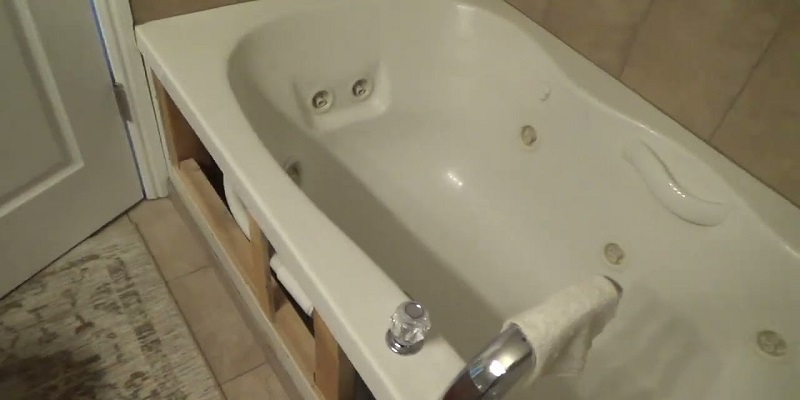
Replacement Process for a Fiberglass Tub Front Panel
Replacing a fiberglass tub front panel is a manageable task that can either be handled as a DIY project or by a professional. Here is a step-by-step guide on the process.
Step 1: Gather Necessary Tools
Before beginning the replacement, it’s important to gather all the necessary tools. These typically include a utility knife, caulk remover, adhesive, a caulking gun, and a measuring tape. For safety, gloves and goggles are also recommended.
Step 2: Remove the Old Panel
The first step in replacing the fiberglass tub front panel is removing the old one. Start by cutting away any caulking or sealant around the edges of the panel using a utility knife or caulk remover. Be careful not to damage the surrounding walls or bathtub. Once the caulk has been removed, gently pry the panel away from the tub using a flat tool like a putty knife. If the panel is glued in place, you may need to apply heat using a heat gun to loosen the adhesive.
Step 3: Clean the Surface
After the old fiberglass tub front panel has been removed, thoroughly clean the area where the new panel will be installed. Remove any remaining adhesive or caulk using a scraper, and make sure the surface is smooth and dry before moving forward. This step is crucial for ensuring that the new panel adheres properly.
Step 4: Measure and Prepare the New Panel
Before installing the new fiberglass tub front panel, take accurate measurements to ensure a perfect fit. Most panels come pre-measured, but adjustments may be necessary depending on the specific dimensions of your tub. If any trimming is required, use a fine-toothed saw to cut the panel carefully to size.
Step 5: Install the New Panel
Once the surface is clean and the new panel is prepared, apply adhesive to the back of the fiberglass tub front panel, following the manufacturer’s instructions. Press the panel firmly onto the front of the tub, ensuring it is properly aligned. Use a level to confirm that the panel is straight, and apply pressure for a few minutes to allow the adhesive to bond.
Step 6: Seal the Edges
After the panel is securely in place, use a caulking gun to apply a fresh bead of silicone caulk around the edges of the fiberglass tub front panel. This step is essential for preventing water from seeping behind the panel and causing damage. Smooth the caulk with a wet finger or a caulking tool to create a clean, professional finish.
Step 7: Let the Adhesive Cure
Allow the adhesive to cure for the recommended time, usually 24 hours, before using the bathtub. During this time, avoid any exposure to water to ensure the panel sets correctly.
Key Advantages of Using Hollow Fiberglass Tube in Construction
How to Choose the Right Fiberglass Tub Front Panel
When selecting a fiberglass tub front panel, consider the following factors:
- Durability and Longevity: Fiberglass is known for its sturdy and long-lasting properties, making it a cost-effective investment.
- Size and Fit: Measure your bathroom space carefully to ensure the panel fits perfectly without the need for major adjustments.
- Design Preferences: Choose a panel that complements your bathroom’s aesthetic, from minimalist styles to intricate designs.
- Budget: Fiberglass panels are affordable, but premium options with additional features like reinforced backing or integrated shelving may cost more.
- Potential Drawbacks: Consider possible downsides, such as susceptibility to scratches or fading, and ensure they align with your expectations.
- Brand Reputation: Opt for trusted manufacturers offering high-quality fiberglass panels for long-lasting performance and style.
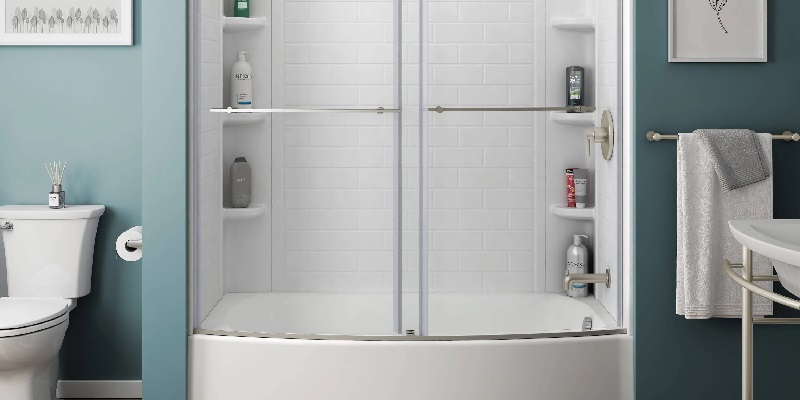
Maintenance Tips for Fiberglass Tub Front Panels
To keep your fiberglass tub front panel in excellent condition, follow these tips:
- Regular Cleaning: Use mild soap and a soft sponge to clean the panel and avoid abrasive cleaners that can scratch the surface.
- Apply Protective Wax: Use a fiberglass-safe wax once or twice a year to maintain the panel’s shine and reduce wear and tear.
- Inspect Caulking: Regularly check the caulking around the panel for cracks or gaps to prevent water leaks and mold growth.
- Repair Damage Promptly: Fix chips or cracks with a fiberglass repair kit to maintain the panel’s structural integrity.
- Avoid Harsh Chemicals: Steer clear of products with bleach or ammonia, as they can damage the panel’s finish over time.
By following these steps, you can ensure your fiberglass tub front panel remains durable, functional, and visually appealing for years to come.
How to Choose a Suitable Fiberglass Tub Front Panel Supplier
Selecting the right supplier for a fiberglass tub front panel is crucial to ensure you receive high-quality products and reliable service. Here are detailed steps to guide your decision:
- Evaluate Product Quality: Look for suppliers that offer fiberglass panels made from durable materials with reinforced construction to ensure long-term performance. High-quality panels should be resistant to scratches, stains, and fading.
- Check Industry Reputation: Research the supplier’s reputation by reading customer reviews and testimonials. A well-established supplier with positive feedback is more likely to deliver dependable products and services.
- Assess Product Range: Choose a supplier with a diverse range of fiberglass tub front panels, offering various sizes, designs, and finishes to meet your specific needs.
- Inquire About Customization Options: If your bathroom requires unique dimensions or designs, look for suppliers who provide customization services to create tailored solutions.
- Verify Certifications and Standards: Ensure the supplier complies with industry standards and provides certifications for their fiberglass products, guaranteeing safety and quality.
- Compare Pricing and Value: While affordability is essential, focus on value rather than the lowest price. A reputable supplier balances cost-effectiveness with superior quality.
- Customer Support and After-Sales Service: Reliable suppliers offer excellent customer service, including installation guidance, maintenance tips, and warranties for their products.
- Delivery and Logistics: Ensure the supplier provides timely delivery services and reliable packaging to prevent damage during transit.
By following these steps, you can confidently select a trustworthy fiberglass tub front panel supplier, ensuring your bathroom upgrade is both high-quality and hassle-free.
Advantages of GangLong Fiberglass as a Fiberglass Tub Front Panel Supplier
GangLong Fiberglass stands out as a reliable supplier of fiberglass tub front panels due to its comprehensive expertise and advanced manufacturing capabilities. Here are the key advantages:
- High-Quality Manufacturing Processes: GangLong Fiberglass utilizes state-of-the-art production facilities equipped with the latest technology to ensure precision and consistency in every fiberglass tub front panel produced.
- Customization Capabilities: The company specializes in meeting unique customer specifications with custom solutions, providing tailored fiberglass tub front panels that match individual project requirements.
- Commitment to Innovation: With a focus on R&D and design, GangLong Fiberglass integrates modern technologies and innovative manufacturing techniques, ensuring their panels are durable, functional, and visually appealing.
- Experienced Technical Team: A dedicated team of technical personnel is available to provide expert guidance, from initial product selection to post-installation support, ensuring seamless customer experiences.
- Durable and Long-Lasting Products: GangLong Fiberglass emphasizes high mechanical strength, corrosion resistance, and anti-aging properties in its fiberglass products, offering panels with a long service life and exceptional performance.
- Streamlined Production: Their production workflow is highly efficient, with separate sections for each product line, allowing them to handle large-scale and custom orders without compromising quality or lead times.
- Global Trust and Reputation: The company’s commitment to sustained product quality and customer satisfaction has earned the trust of both domestic and international clients.
- Comprehensive Product Expertise: In addition to fiberglass tub front panels, GangLong Fiberglass excels in related fiberglass products like cable trays and grating, showcasing its versatility and depth of expertise in fiberglass manufacturing.
With these advantages, GangLong Fiberglass offers a dependable, high-quality solution for customers seeking durable and customizable fiberglass tub front panels.
FAQs about Fiberglass Tub Front Panel
The typical life expectancy of a fiberglass bathtub is between 10 and 15 years, depending on usage and maintenance. Fiberglass is a durable material, but over time, it can experience surface wear, scratching, and potentially cracking under heavy impact. Regular maintenance, including gentle cleaning, can help extend the tub’s lifespan. Using non-abrasive cleaners and avoiding harsh chemicals is essential to preserve the finish. Although fiberglass may not last as long as cast iron or acrylic, it remains a cost-effective solution for homeowners looking for an affordable, functional bathtub that provides long-term service.
Choosing between acrylic and fiberglass for a bathtub depends on your priorities. Fiberglass is often more affordable and easier to install due to its lightweight nature. However, fiberglass is more prone to scratches and may need replacement after about 10 to 15 years. Acrylic, while slightly more expensive, is more resistant to scratches and cracks, offering a longer lifespan of up to 20 years or more. Acrylic also provides a wider range of design options and colors. If budget is a concern, fiberglass is a good choice, but for longer-lasting durability and aesthetic variety, acrylic is often considered the better option.
When cleaning a fiberglass tub, avoid abrasive cleaners, steel wool, or scrub brushes, as these can scratch the surface and damage its glossy finish. Strong chemicals like bleach or ammonia should also be avoided, as they can cause discoloration and weaken the fiberglass over time. Instead, use mild, non-abrasive cleaners such as dish soap, or a baking soda and water mixture, to maintain the tub’s surface. Avoid placing heavy objects directly on the fiberglass, as the material can crack under pressure. Regular, gentle cleaning with appropriate products will help extend the tub’s lifespan and preserve its appearance.
To determine if your tub is fiberglass or cast iron, tap the surface and listen for the sound. If it sounds hollow and feels lightweight, it’s likely fiberglass. Cast iron tubs are significantly heavier and produce a solid, dull thud when tapped. You can also check the tub’s texture: fiberglass is typically smooth and flexible, whereas cast iron is hard, cold, and usually coated with enamel. The weight of the tub is also a clue, as cast iron is much heavier than fiberglass.
Replacing a fiberglass tub surround panel involves careful removal and installation. First, shut off the water supply and remove fixtures like the showerhead, faucet, and handles. Cut through any caulking around the edges using a utility knife. Next, gently pry off the old panels using a putty knife or crowbar, taking care not to damage the underlying wall. Inspect and repair the wall surface if needed. Measure the area accurately and cut the new fiberglass panels to size, if necessary. Apply an adhesive suitable for fiberglass to the back of the panels and press them into place. Secure the panels with screws or clips as instructed by the manufacturer. Reinstall the fixtures and apply a waterproof caulk around the edges to ensure a watertight seal. Allow the adhesive and caulk to cure as per the instructions before using the tub or shower.
Yes, refinishing a fiberglass tub surround is a cost-effective way to restore its appearance and extend its lifespan. The process involves cleaning the surface thoroughly to remove soap scum, grime, and mineral deposits. Once cleaned, sand the fiberglass surface lightly to ensure proper adhesion for the refinishing materials. Repair any cracks or chips with a fiberglass repair kit. Next, apply a primer specifically designed for fiberglass, followed by several coats of a durable refinishing paint or coating. These products are typically epoxy or acrylic-based and offer a glossy, protective finish. Refinishing can usually be completed in a single day and requires minimal downtime. However, proper ventilation and protective gear are essential during the process due to the fumes emitted by the refinishing products. While refinishing does not last as long as replacement, it can provide a fresh look and added durability for several years.
The cost to reglaze a fiberglass tub typically ranges from $300 to $600, depending on factors like the tub’s size, condition, and location. Reglazing involves applying a new coating over the existing surface to restore its shine and functionality. Professional services may charge more, but the results are often longer-lasting and of higher quality compared to DIY kits. Additional costs may arise if repairs, such as fixing cracks or chips, are needed before reglazing. DIY kits are more affordable, costing around $50 to $100, but they require significant preparation and skill to achieve a smooth finish. Reglazing can extend the tub’s life by several years and is a budget-friendly alternative to full replacement. However, it’s essential to choose high-quality products and experienced professionals to ensure a durable and visually appealing outcome.
Fiberglass bathtubs typically last 10 to 15 years with proper care and maintenance. Their lifespan depends on factors such as usage, cleaning practices, and exposure to harsh chemicals. Over time, the surface may develop scratches, stains, or cracks due to regular wear and tear. To prolong the life of a fiberglass tub, clean it regularly using non-abrasive cleaners and avoid using scouring pads or harsh chemicals that can damage the surface. Minor chips and cracks can often be repaired using fiberglass repair kits, helping to maintain the tub’s integrity and appearance. Proper sealing around the edges also prevents water damage to the underlying structure. Although they are lightweight and affordable, fiberglass tubs are less durable than materials like acrylic or cast iron, making them more prone to wear over time.
The cost to replace a fiberglass tub ranges from $1,000 to $3,000, including labor and materials. The price varies based on the tub’s size, style, and additional work, such as plumbing or wall repairs. The tub itself can cost between $200 and $800, with installation expenses making up the remainder. If professional contractors are hired, labor costs typically range from $500 to $1,500, depending on the complexity of the project. Additional expenses may include the removal and disposal of the old tub, wall repairs, and the installation of new fixtures. DIY replacement is possible and can save on labor costs, but it requires significant effort, tools, and expertise to ensure a proper fit and watertight seal. Replacing the tub is a long-term investment that enhances the bathroom’s functionality and aesthetics.
Replacing a fiberglass tub surround generally costs between $600 and $2,000, depending on the materials and labor involved. The panels themselves typically range from $200 to $600, with higher-end models costing more. Labor costs for professional installation average between $400 and $1,400, depending on the complexity of the project. Additional expenses may include removing and disposing of the old surround, repairing underlying walls, and applying caulking for waterproofing. DIY installation can save labor costs, but it requires precision and proper tools to ensure a secure and professional-looking result. Modern fiberglass surrounds often include built-in shelving and stylish finishes, making them an attractive and functional upgrade. Replacing the surround not only enhances the bathroom’s appearance but also ensures better protection against water damage.

As the editor of GangLong Fiberglass, I have years of experience and in-depth research, focusing on cable tray products, fiberglass solutions, and grille systems. I incorporate years of industry insights and practical experience into every content, committed to promoting the progress of the industry. At GangLong Fiberglass, my commitment is reflected in every product, from innovative cable trays to durable fiberglass solutions and sturdy grille systems. As an authoritative voice in the industry, my goal is to provide valuable information to professionals and businesses and promote forward-looking solutions.

